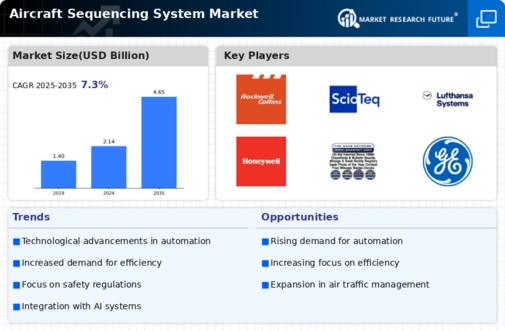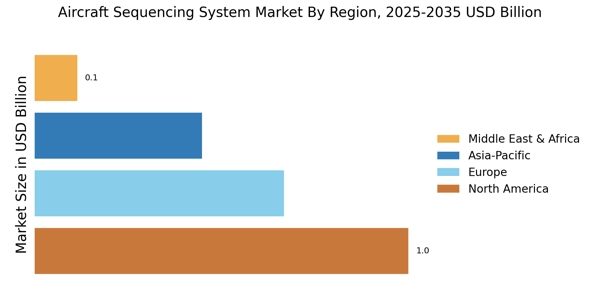Rising Air Traffic Demand
The Aircraft Sequencing System Market is experiencing a notable surge in demand due to the increasing volume of air traffic. As more passengers opt for air travel, airlines are compelled to enhance their operational efficiency. According to recent data, air traffic is projected to grow at a compound annual growth rate of approximately 4.5% over the next decade. This growth necessitates advanced sequencing systems to manage aircraft movements effectively, thereby reducing delays and optimizing runway usage. Consequently, the demand for sophisticated aircraft sequencing systems is likely to rise, as airlines seek to accommodate this influx of air traffic while maintaining safety and punctuality.
Focus on Operational Efficiency
In the Aircraft Sequencing System Market, there is a pronounced focus on enhancing operational efficiency among airlines. The need to minimize turnaround times and optimize resource allocation drives the demand for advanced sequencing systems. Airlines are increasingly recognizing that efficient aircraft sequencing can lead to significant cost savings and improved customer satisfaction. Data suggests that optimizing aircraft movements can reduce fuel consumption by up to 15%, which is a crucial factor in an industry facing rising fuel costs. As airlines strive to improve their bottom line, the adoption of sophisticated aircraft sequencing systems is likely to accelerate.
Technological Advancements in Aviation
Technological innovations are significantly shaping the Aircraft Sequencing System Market. The integration of artificial intelligence, machine learning, and data analytics into aircraft sequencing systems enhances decision-making processes and operational efficiency. These technologies enable real-time data processing, allowing for dynamic adjustments to flight schedules and ground operations. As airlines increasingly adopt these advanced systems, the market is expected to witness substantial growth. Reports indicate that the adoption of AI-driven solutions in aviation could lead to a reduction in operational costs by up to 20%, further driving the demand for sophisticated aircraft sequencing systems.
Regulatory Compliance and Safety Standards
The Aircraft Sequencing System Market is heavily influenced by stringent regulatory compliance and safety standards imposed by aviation authorities. These regulations necessitate the implementation of advanced sequencing systems to ensure safe and efficient aircraft operations. Compliance with safety protocols not only mitigates risks but also enhances the overall reliability of air travel. As regulatory bodies continue to evolve their standards, airlines are likely to invest in state-of-the-art aircraft sequencing systems to meet these requirements. This trend is expected to propel market growth, as adherence to safety regulations becomes increasingly critical in maintaining operational licenses and public trust.
Increased Investment in Airport Infrastructure
The Aircraft Sequencing System Market is benefiting from increased investments in airport infrastructure. Governments and private entities are allocating substantial resources to modernize airports, which includes upgrading air traffic management systems. Enhanced airport infrastructure facilitates the implementation of advanced aircraft sequencing systems, allowing for better management of air traffic and improved passenger experiences. With many airports undergoing expansion and modernization projects, the demand for efficient sequencing systems is expected to rise. This trend indicates a robust growth trajectory for the aircraft sequencing system market, as airports seek to accommodate future air traffic demands.


















Leave a Comment